You’d be forgiven for turning your nose up at the idea of a classic people-mover. Called multi-purpose vehicles (MPVs) in Europe, and minivans in the US, it’s perhaps one of the least glamorous vehicle segments ever devised – a class of car devoted to moving you and your presumably plentiful offspring from place to place, with maximum thought given to practicality and minimum attention to sleek styling or driver appeal.
And yet, older minivans are enjoying a bit of a moment right now. Perhaps it’s fuelled by nostalgia from Gen Xers and millennials who used to travel around in the back of the things, or maybe it’s a backlash to the more stylish but more practically compromised crossovers and SUVs that dominate today’s family-car space. Either way, MPVs have gone from being deeply uncool to sparking just a little interest among those looking for something a bit different from the norm.

Take a look around the Festival of the Unexceptional and you’re sure to find a Renault Espace, while we’ve seen Chrysler minivans and “Dustbuster” Pontiacs at Radwood too – both signs that an audience who may not have even been around for the first wave of minivans is now beginning to notice them.
Below, we’ve selected 10 MPVs, stretching from the 1950s to the 1990s, which put seats above steering feel, headroom ahead of horsepower, and space as a substitute for pace.
Chrysler Minivans
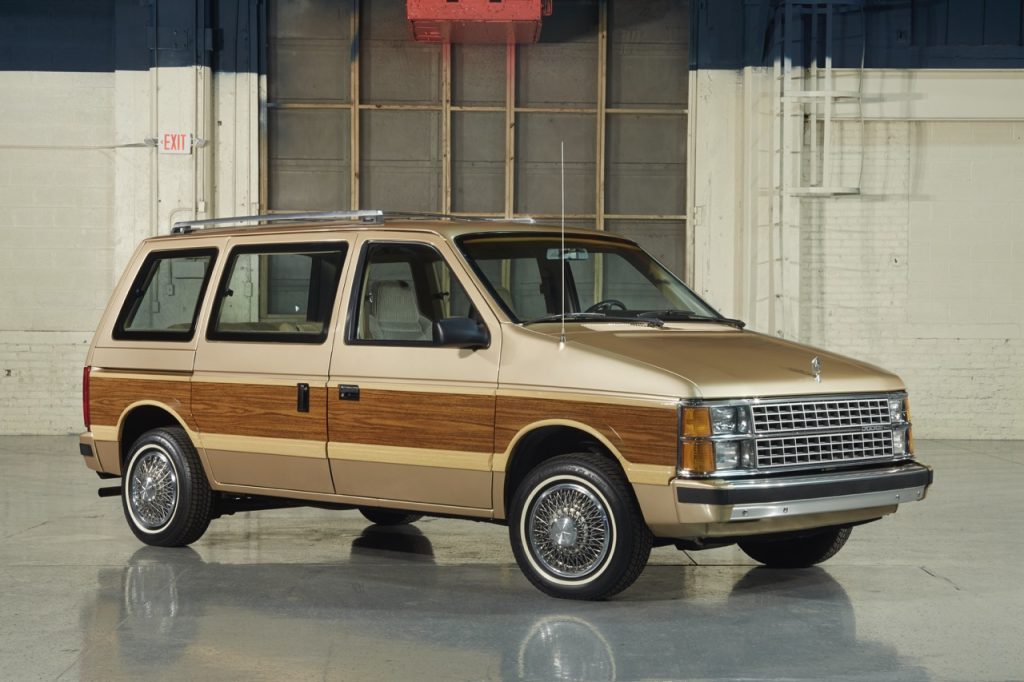
For some, this is where the minivan story starts, with the Dodge Caravan and Plymouth Voyager in late 1983. Chrysler’s relatively compact, front-wheel-drive, sliding-door, cup-holder-laden, multi-seated, monocoque-structure vans were about as close to the modern definition of an MPV as you’d find in the 1980s.
No longer than the vehicles riding on Chrysler’s compact K-car platform, the vans could seat up to eight, while the K-car–sourced four-cylinder engines didn’t have to work too hard in what was, compared to the older body-on-frame full-size vans that existed at the time, a much lighter and more aerodynamic vehicle. Initially you could get them with five-speed manuals, and compared to an old VW bus, most peoples’ experience of a relatively compact multi-seater, the Caravan and Voyager were rocketships.
It’s no surprise the Chrysler minivans set the MPV template; they simply drove better than the competition, and that included the Japanese models of the period, which for once were less sophisticated than their American counterparts – and couldn’t always be relied upon to stay upright. Find one today – most remain in the US – and you’ll rarely need more than $5000.
Fiat 600 Multipla

Here’s a fun nugget of trivia: The Fiat 600 Multipla arrived in 1956, making it even older than the brand’s now-definitive model, the Nuova 500, which went on to influence basically Fiat’s entire modern range. Including today’s Fiat 600, though it is now more of an SUV. That’s a shame, because it could have been a brilliant and rather cute MPV like the original Fiat Multipla.
As the name suggested, the 600 Multipla was based on the mechanicals of the 600, which had arrived in 1955. The work of Dante Giacosa, as per both regular 600 and 1957’s 500, it remained rear-engined but in just half a metre more length than a Mini (which of course wouldn’t arrive until 1959), it could seat six.
The 600 Multipla really is a classic, more so than any on this list other than the VW Type 2, and it’s similarly prized by collectors: Concours cars have gone for more than £50,000, and you’ll pay £20K for a condition #3 “good” one. With between 16 and 32bhp depending on the year, it’s perhaps not a car you’ll use for serious human transportation, but few MPVs are more historically significant. Or adorable.
Fiat Multipla
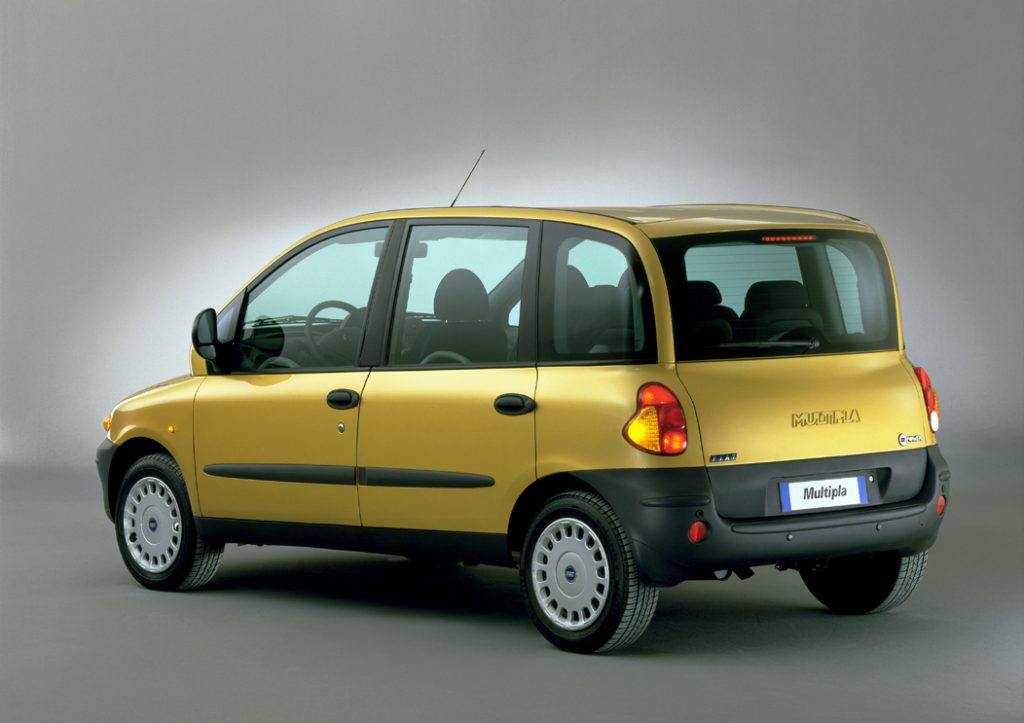
If the original Fiat 600 Multipla was among the first true MPVs, tiny or not, the 1998 Multipla felt somewhat late to the party. But it hardly mattered, because it had two things on its side: It was fiendishly clever, squeezing six proper seats into a car shorter than most modern superminis (it’s under four metres long), and nobody could forget how it looked.
The cleverness is accounted for partly in its width, which was sizeable at the time (15cm wider than a Renault Scenic), but at 1871mm, it isn’t actually that broad by 2020s standards. That latter point is either a very good or very bad thing depending on your aesthetic sensibilities, but hey, it’s memorable. You probably don’t care if most MPVs even exist, but you’re guaranteed to have at least some kind of opinion on the Multipla.
Inside, things were equally wild, not just for seating three in the front, but for the jumbled pod of gearshift, instruments, vents, and switches in the centre, and the deep side windows that provided spectacular visibility. What you may not remember is that the Multipla was great to drive. The petrol and diesel aren’t especially rapid, with 0–60 times in the 12-second range, but the dash-mounted shift was slick and the wide track meant plenty of grip and stability. A couple of grand gets one of the most distinctive cars of the decade.
Ford Aerostar

If imitation really is the sincerest form of flattery, then consider the Ford Aerostar as flattering to the Chrysler minivans as PSA’s (Peugeot/Citroën) “Eurovans” were to the Espace in Europe. You don’t always need to be first to market as long as you get things right, and more than 2 million sales between 1985 and 1997 suggest Ford didn’t do too badly on that front.
Like many of the 1980s minivans, work actually started on the Aerostar in the 1970s, when bigger body-on-frame vans were still the go-to. Ford’s list of requirements included seven seats, car-like economy, and a body small enough you could park it in a garage – similar to the criteria laid out by Chrysler for its own vans.
Unlike the Chryslers, the V6-powered Ford was predominantly rear-wheel drive, with all-wheel drive available, and Aerostar styling was more modern than the set-square Chryslers. While still popular, sales never quite matched those of Ford’s rival, and Aerostars are a rarer find today. But if you want a taste of late 20th century suburban normcore, just $5000 or so secures a pretty tidy one.
Mitsubishi Delica
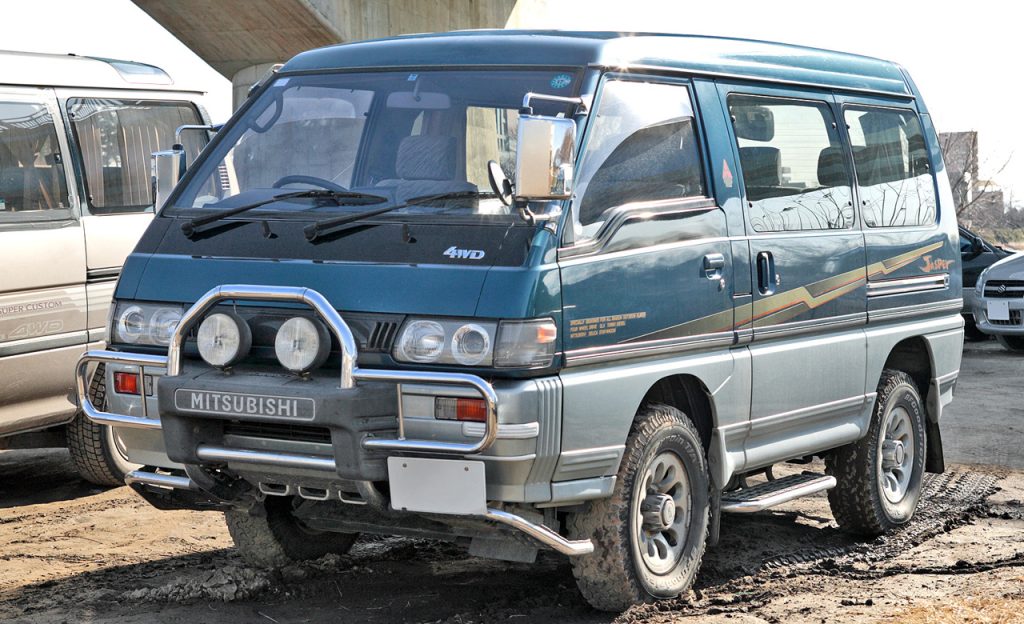
We’re casting our eye on a very specific Mitsubishi Delica here, one that has developed a cult following that spreads far beyond its Japanese homeland, despite only being sold new in a handful of markets outside Japan. In the US in particular, the model’s popularity exploded when the first imports became legal in 2019 – 25 years after production of the fourth-gen L400 Delica began.
Why has it suddenly attracted all this demand? Probably because of its dual-purpose appeal: The Delica isn’t just a minivan, it was also widely available with four-wheel drive, its engine and transmission lifted directly from the Pajero 4×4 of the era. With raised suspension and traction from all four wheels, a Delica will go where most MPVs will not.
As a result, you can pay an easy five figures for a clean, well-maintained Delica, whether you’re reading this in the UK or the US, though rough models that have been in Europe for a while start at less. You’ll need to be confident with tall, slightly tippy vehicles, however, as handling isn’t the Delica’s forte. But as a way of mixing SUV-style go-anywhere appeal with the unmatched practicality of an MPV, the Delica is unbeaten.
Pontiac Trans Sport
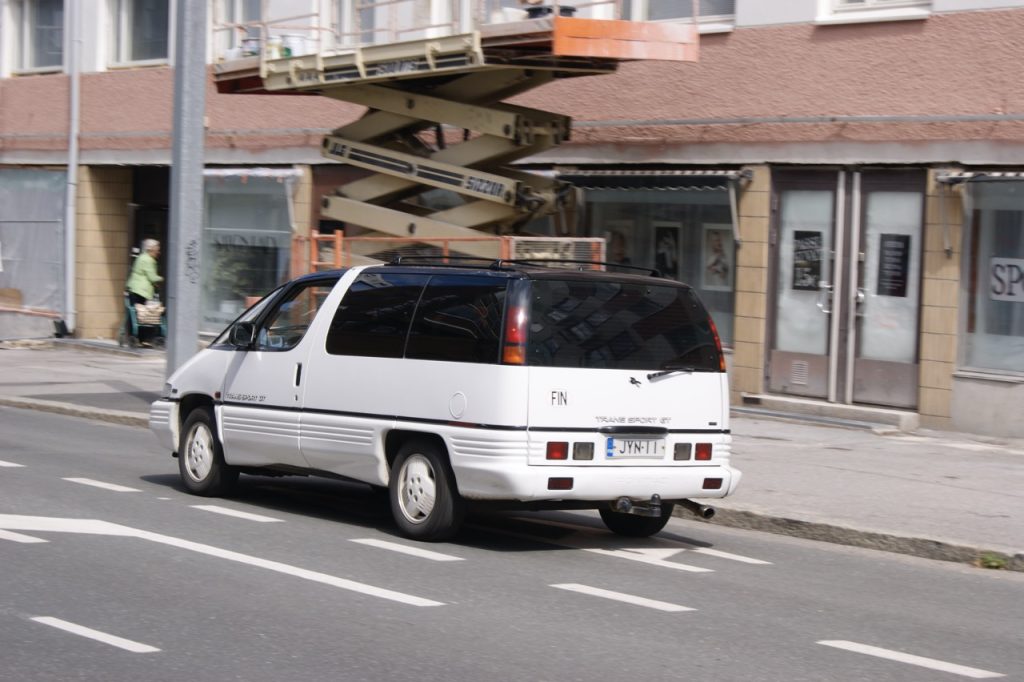
Dustbuster. A hand-held vacuum cleaner, but also, thanks to the shape of GM’s trio of wedge-shaped minivans introduced in 1989, one of the best automotive nicknames this side of “Clown Shoe” and “Landcrab.” Most memorable of the Dustbusters was the Pontiac Trans Sport, the brand’s first minivan and the most sportily styled of the bunch, which also included the Chevrolet Lumina APV and Oldsmobile Silhouette.
Designed from the ground up and on a new platform, the Trans Sport’s construction was in some ways similar to the Espace below, with a spaceframe structure from which plastic panels were hung. While not quite as dramatic as the 1986 concept that preceded it, it was certainly one of the more distinctive early minivans too, the glass areas looking more like a Jetsons-style canopy divided by a thick, carry-handle-style B-pillar.
Sporty looks didn’t exactly translate into a scintillating drive, but it was better than operating an actual vacuum cleaner, and a predominantly V6-powered lineup, including the near-unburstable 3800 beloved across much of GM’s contemporary range, gave it some pep. Like most on this list, the biggest trouble is finding one today, as quite understandably, few families treated them like future classics.
Renault Espace
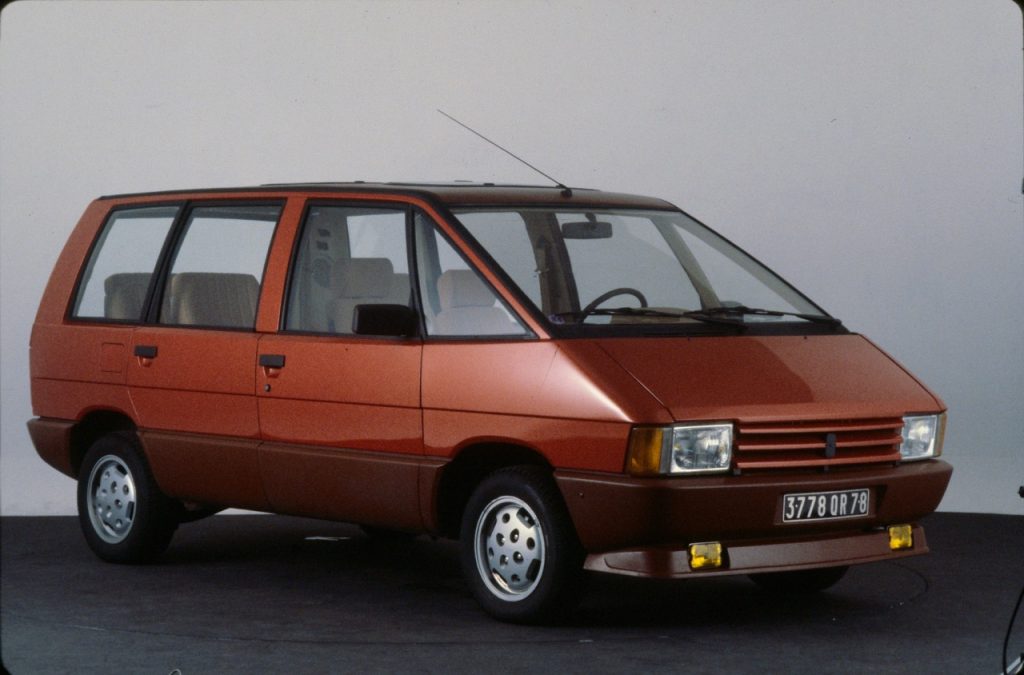
Although the Chrysler minivans kicked off the craze in the United States, in Europe it was Renault – or rather, Matra – behind the first modern MPV, when the Espace made its debut in 1984. Matra had been exploring the monobox people-mover concept since the 1970s, but after being turned down by PSA (Peugeot and Citroën), the company took the idea to Renault.
The Espace launched in 1984, with an unusual part-monocoque, part-spaceframe construction clothed in fibreglass panels, while the longitudinal front-wheel-drive layout was typical of Renaults of the period. PSA’s reluctance was nearly vindicated when Renault sold just nine Espace vans in the model’s first month on sale, but customers quickly realised the benefits, and by the time the second-generation Espace arrived in 1991, Renault had moved nearly 200,000 units.
Today, the Espace is fast becoming appreciated for its distinctive design – a shape that Renault likened to France’s TGV high-speed trains when the car was new. The early Espace is as easy to drive as any other family car from the 1980s, but it packs seven full-sized seats into a footprint barely longer than a modern Megane.
Toyota Previa
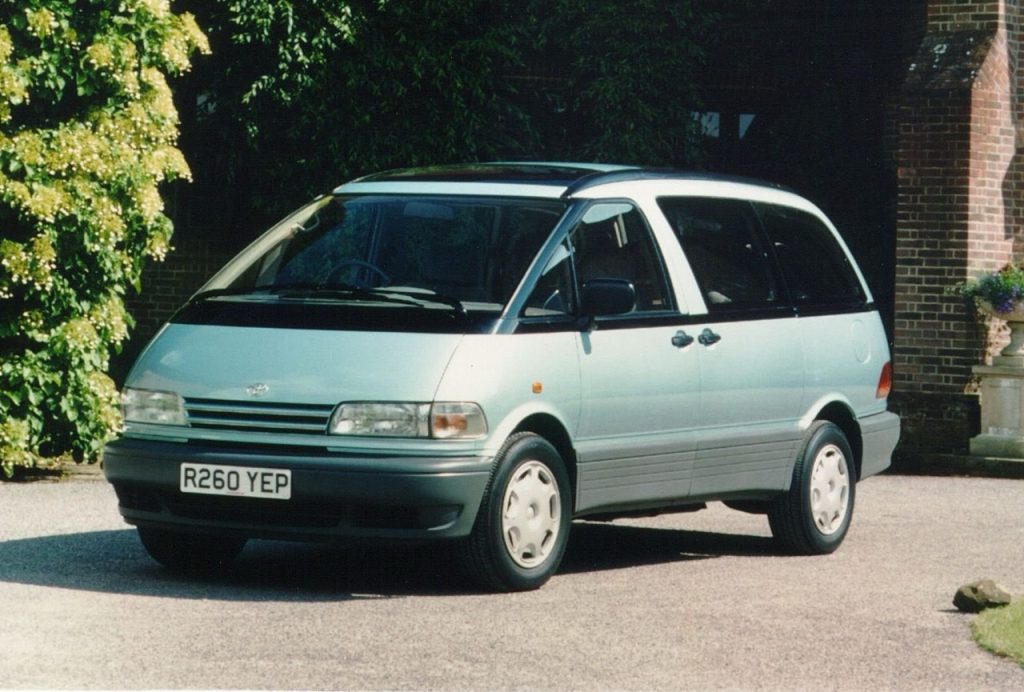
“Is that the mid-engined one?” It is a question you’ll hear a lot with the first-generation Toyota Previa. Indeed it is: Sold in both rear-wheel- and four-wheel-drive formats, the Previa’s 2.4-litre petrol engine (either naturally aspirated or supercharged) or 2.2-litre turbodiesel in some markets, is stashed at 75 degrees just aft of the front seats.
Toyota wasn’t new to the MPV concept when it introduced the Previa in 1990 – it effectively replaced the Space Cruiser below. The Previa was physically larger, however, and had seven- and eight-seat options, though with the driver sitting in a more conventional place behind the front axle, it’s ultimately not quite as spacious as its predecessor. Almost certainly safer and more refined, though.
The Previa’s appeal today is clearly its styling, with goldfish bowl visibility and a friendly 1990s egg-like form. The interior is great, too, with that unbeatable ’90s Toyota feel and, depending on the model year, either a high-tech hooded gauge cluster or a pleasingly wavy layout. Rust and hard use can kill them off, but a well-maintained Previa, bought for only a few grand, should last indefinitely.
Toyota Space Cruiser
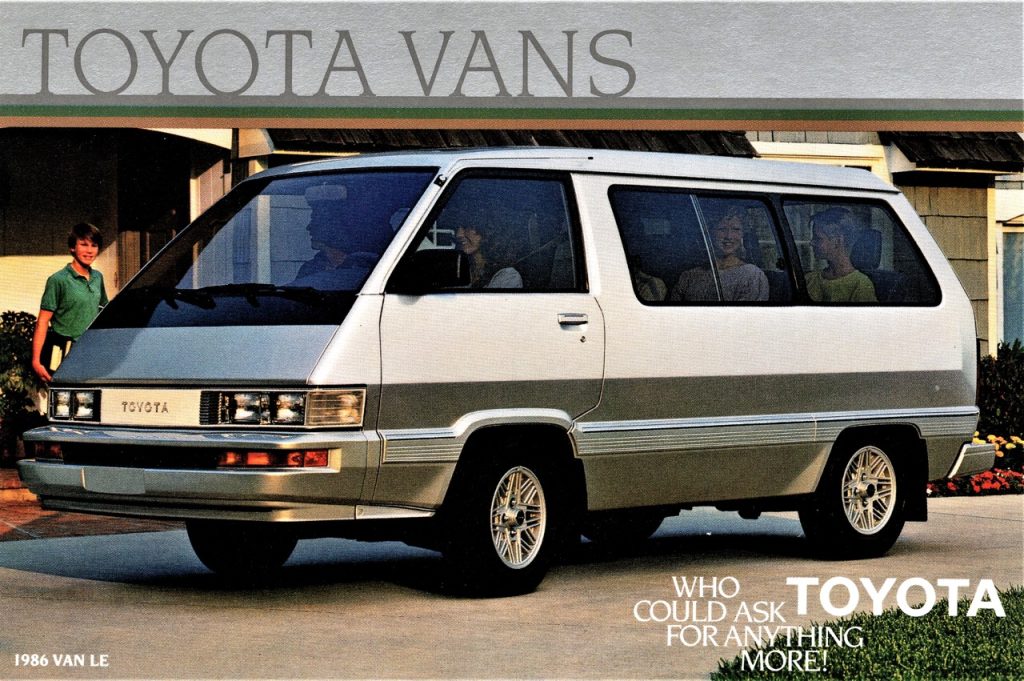
The Toyota LiteAce has worn several names over eight generations and more than half a century, but the UK’s “Space Cruiser” moniker perhaps best reflects both the fourth-generation van’s purpose and the 1980s obsession with technology and science-fiction better than any other. It’s a far better name than it got in America, where it was known simply as the Toyota Van. Squint a bit, and the Space Cruiser could be a Star Trek shuttlecraft.
Sold from 1982, and therefore predating the two progenitors of the dedicated multi-purpose vehicle, the Chrysler minivans and the Renault Espace, the Space Cruiser was certainly more van-like, both in its upright cab-over silhouette and in the way it drove. But in under 4.3 metres it could seat eight, with sliding side doors and rear benches that could lie flat, to create, as the brochure put it, “a convenient bed.”
Like most on this list, hard family lives when new followed by even harder part-time-van duties from subsequent owners mean the Space Cruiser’s survival rate is low, and even if you can find one, a combination of a 77bhp 1.8-litre four and a kerb weight of over 1300kg means progress is sedate. But how great would this snapshot of 1980s family life look parked alongside a contemporary Toyota AE86 Corolla or A60 Supra?
Volkswagen Type 2

The OG of the people-mover . . . err, movement, has to be the original Volkswagen bus, doesn’t it? The Type 2 van was launched all the way back in 1949, decades before most imitators, though in fairness to those above, the Transporter and its ilk were very much commercial vehicles first and dedicated people-carriers second. They drive like it, too.
Most desirable and valuable is a 23-window bus from the 1950s and 1960s; best value of the original rear-engined models is the T3, or T25 (as found in the 2021 Hagerty Bull Market, and the 2022 Hagerty UK Bull Market lists), while later front-wheel-drive versions are tough, practical, and a lot more car-like to drive – the 2003-on T5 doesn’t quite feel like a classic yet, but the understated 1990-on T4 has similar retro appeal to other 1990s Volkswagens.
If being van-based doesn’t do much for the Transporter’s driving characteristics or refinement levels, it does at least confer amazing practicality, and while converting some of the other minivans here into overnight campers might be tricky, there’s an enormous aftermarket willing to trade the VW’s seats for beds, kitchens, and more.







The Renault Espace 1st edition was brilliant for our growing family with individual seating and plenty of room. We then progressed to the 2nd and 3rd series. The Grand Espace for the 4th series, all with many miles of family motoring. By removing the seats the vehicle helped with house moves and children leaving home for university. Grand Espace IV was a great ‘Party Bus’ and favourite for our grandchildren. All vehicles were very well used and the last one passed over 200,000 miles. All family members were sad to see it go. It’s a shame Renault didn’t manufacture an upgraded Grand Espace V.
What about the Vauxhall/Opel Zafira?
The 23-window Volkswagen (and the lesser ones) are as magical a design classic as ever, and just as unattainable as ever, though the suggestion that others can be considered classic, too, is an interesting one. However, I suspect it’s just the VW. On badge size alone.
Don’t forget the Mazda 5 mk2. Super handy because of the sliding doors. Drives perfectly and is very reliable. I really like the flowing lines